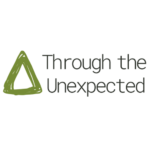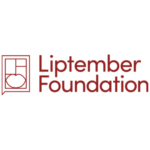Improving women’s mental health through training to address the psychosocial aspects of prenatal diagnosis.
Facing the Unexpected
Current project: March 2022 – March 2025
We are developing the first Australian microcredential course focused on the psychosocial aspects of prenatal diagnosis, for health and allied health professionals.
Our training will be informed through an interdisciplinary program of research undertaken in collaboration with researchers from RMIT University, James Cook University and La Trobe University. The research will address key gaps in knowledge through a series of studies that explore the experiences and perspectives of training needs of health and allied health professionals and people with lived experience of receiving a prenatal diagnosis.
A team of professionals, researchers and people with lived experience will then work together to co-design the online training modules, informed by the research.
The training will cater to professionals who work with women and other pregnant people at any point in their journey through the unexpected, whether this is at the diagnosis and decision-making, during or after a termination for medical reasons (TFMR), within the early parenting period or subsequent pregnancies. Learners will self-select modules to meet their learning interests, and the completion of a set number of modules will qualify the learner for a microcredential.
Unexpected news about the health, development or genetics of an unborn baby changes the experience of pregnancy and increases the incidence of both acute and enduring mental health challenges for women. There is great potential to reduce the mental health challenges through the provision of non-judgemental, non-stigmatised and supportive care that empowers women and nurtures autonomy and adaption at all stages through the unexpected.
This project was made possible with funding from the Liptember Foundation.
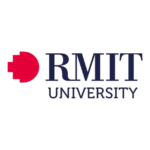
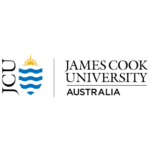
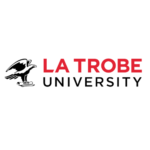
Project and research leads
Study 1: Health professionals training perspectives Principal Investigator: Dr Belinda Johnson, RMIT University, BA, SSW(Hons), GradCertTertTeach&Learn, PhD
Study 2: Co-producing training resources Principal Investigator/ Project lead: Pieta Shakes, James Cook University, PhD Candidate, BN(Hons), PGradCertChild&AdolesMentalHlthNurs, GradCertDiagnosticGenomics, GradCertHEdILearnTeach, MNurs(MentalHlth)
Pieta Shakes has lived experience of receiving a third-trimester prenatal diagnosis.
Research Co-investigator: Dr Tracey Ahern, James Cook University, RN, PhD, BNSc (Hons), Grad Dip (Academic Education), BEd
Research Co-investigator: A/Prof Chris Maylea, La Trobe University, BSW(Hons) MHSMP, JD, DSW
Project advisors
Project advisors with lived experience of receiving a prenatal diagnosis
Natalie Browning, Central Queensland University & Townsville Hospital and Health Service, RN RM BA MEd BN/BMid GCMid MWomHMed MACM
Julia D’Orazio, Julia D’Orazio Postpartum, Accredited Social Worker
Eleanore Fritze, LLB(Hons), BA, Grad Cert Dis St
Sophie Ward, Clinical Psychologist
Zena Mason, Advocate
Additional project advisors
Amanda Bates, Mater Mothers Hospital, Neonatal critical care unit, Clinical nurse consultant- Masters of Clinical practice (Neonatology)
Elizabeth Callinan, Writer & Producer
Alison Deslandes, Specialist Imaging Partners, Accredited Medical Sonographer (AMS), MMedSono
Lucinda Freeman, Graduate School of Health, University of Technology Sydney, Registered Genetic Counsellor
Dr Nicole Highet, Centre of Perinatal Excellence
Margaret Shield, BHSc(Hons)
Skye Stewart, Red Nose, Registered Midwife
Eliza Strauss, The Perinatal Loss Centre, Bereavement Midwife & Perinatal Loss Educator
Dr Imogen Thomson, Royal North Shore Hospital, MD MPhil
Beatrice Webb, ThinkWise Clinical Psychology, BPsych (Hons), MPsych (Clin), Clinical Psychologist
Kara Williams, Down Syndrome Queensland, Registered Midwife, Masters in Primary Maternity Care (Mental Health)
Module collaborators
Amanda Bates, Mater Mothers Hospital, Neonatal critical care unit, Clinical nurse consultant- Masters of Clinical practice (Neonatology)
Natalie Browning, Central Queensland University & Townsville Hospital and Health Service, RN RM BA MEd BN/BMid GCMid MWomHMed MACM
Elizabeth Callinan, Writer & Producer
Alison Deslandes, Specialist Imaging Partners, Accredited Medical Sonographer (AMS), MMedSono
Eliza Strauss, The Perinatal Loss Centre, Bereavement Midwife & Perinatal Loss Educator
Dr Nicole Highet, Centre of Perinatal Excellence
Lyndal Macpherson, Australasian Society for Ultrasound in Medicine, Accredited Medical Sonographer (AMS), GAICD
Dr Renée Miller, The Perinatal Loss Centre, Perinatal Clinical Psychologist & Perinatal Loss Educator
Sophie Ward, Clinical Psychologist
Beatrice Webb, ThinkWise Clinical Psychology, BPsych (Hons), MPsych (Clin), Clinical Psychologist
Kara Williams, Down Syndrome Queensland, Registered Midwife, Masters in Primary Maternity Care (Mental Health)
Progress, presentations and publications
Progress
- Framework and initial learning sequence designed
- Funding obtained – Thank you to the Liptember Foundation!
- Project advisors and module collaborators recruited
- Rapid review of the evidence about the psychosocial outcomes of women who have received a prenatal diagnosis – commenced
- Study 1 ethics approved and survey launched – Perspectives on training for health and allied health professionals who work with women who are receiving or have received news during pregnancy of a possible or confirmed fetal anomaly or variation.
- Study 2 initial conceptualisation and design.
- Study 2 redesigned in response to feedback from project advisors and people with lived experience.
- Content analysis of Australian standards and guidelines for care guidances related to the psychosocial aspects of prenatal diagnosis commenced.
- Study 1 (Health professionals training perspectives survey) data collection completed.
- Study 2 (Co-producing training resources) ethics application submitted.
Presentations
- Making the experience of prenatal diagnosis better together (poster): Perinatal Society of Australia and New Zealand Congress, May 2022
- Improving psychosocial outcomes associated with prenatal diagnosis: a co-designed research and training protocol (presentation): Women’s Health Forum, July 2022
- Gaps in Psychosocial Care Guidance Related to Prenatal Diagnosis: A Safety and Quality Issue (Presentation): Perinatal Society of Australia and New Zealand (PSANZ), March 2023.
Want to receive project updates?
Further information
Project conception
Within the fetal development and anomaly section of the Australian Pregnancy Care Guidelines, there is a single line that recommends women be offered “access to appropriate counselling and ongoing support by trained health professionals” (Department of Health, 2020). While there exists training to specialise in fetal medicine and related fields, there remains a dearth of training related to the psychosocial aspects of prenatal diagnosis. The psychosocial aspects of prenatal screening and diagnosis have not received attention in line with the advancements in technology and the identification of differences (Hodgson & McClaren, 2018).
News that their baby may need medical care, have a disability or a life-limiting condition can throw parents into emotional crisis (Aite et al., 2011). In this state of psychological distress, parents receive complex health information, are expected to make decisions about diagnostic testing and, in many circumstances, decide whether to continue or end their pregnancy. The shift from considering options of nursery colours, to considering options about the life and death of an unborn baby is abrupt and traumatic. Within a study of 91 couples, Aite et al. (2011) found that 88% of mothers and 83% of fathers experienced prenatal diagnosis as a traumatic event. Within a cross-sectional survey with retrospective reporting, 85% of 40 mothers reported re-experiencing trauma symptoms and 35% met full diagnostic criteria for Post-traumatic Stress Disorder (PTSD) (Horsch et al., 2013). Similarly, Rychik et al. (2013) identified 40% of 59 mothers met full diagnostic criteria for PTSD after a prenatal diagnosis of congenital heart disease.
Anxiety is commonly reported after a prenatal diagnosis. Within a cross-sectional survey of 115 mothers who received either a pre or postnatal diagnosis, Fontoura et al. (2018) found that state anxiety was higher after a prenatal diagnosis and rated moderate to severe in one in two women. Anxiety after a prenatal diagnosis may be both acute and enduring. Mothers continuing a pregnancy after a prenatal diagnosis were found to have high rates of depressive and anxiety symptoms both during pregnancy and one year after birth using well-validated measurement scales (Asplin et al., 2015).
High antenatal distress and anxiety may harbour consequences for the developing fetus within a continued pregnancy. Developmental impacts of poor maternal antenatal mental health have been well established (Adamson et al., 2018; Grigoriadis et al., 2018) and thus likely confound the developmental differences for children affected by a congenital anomaly. The potential consequences of the unmet psychosocial needs of parents who receive a prenatal diagnosis are starting to feature within the literature (Kasparian, 2019).
Research from the United States of America highlights the potential to reduce distress and enduring mental health conditions through the provision of empathetic non-judgemental, non-stigmatised support that addresses the individual needs of women (Kaasen et al., 2017). However, with the absence of training specifically relating to the psychosocial aspects of prenatal diagnosis and the gross overlook of care within national guidelines, it remains likely that some parents do not receive this high standard, supportive care in an equitable manner. This suggestion is supported by a Melbourne-based study in which women shared how human and systemic factors specifically increased their distress during and following a termination of pregnancy after a fetal anomaly diagnosis (Pitt et al., 2016).
The risk of not addressing professional training also harbours consequences for health and allied health professionals. Multidisciplinary professionals working within Australian fetal medicine departments described the work as personally and professionally challenging, with many experiencing their own trauma or feelings of burnout (Menezes et al., 2013). A more recent study of Australian sonographers who deliver unexpected news to parents during obstetric ultrasound similarly identified feelings of frustration, stress and burnout (Thomas et al., 2017). The lack of formal specific training was related to burnout and moral distress in both studies. In the UK, sonographers who had received specific training on the communication of challenging ultrasound findings were found to experience less disengagement symptoms, which the authors suggested to support the consideration that training can reduce burnout and stress within health professionals (Johnson et al., 2019).
There is an identified need for training that specifically addresses the wide range of factors that may influence psychosocial outcomes for parents and professionals who support parents at any stage along their journey, from the preparation for screening, through to early parenting or a subsequent pregnancy after loss.
Learning sequence design
A design thinking process was adopted for the initial construction of the learning sequence. This first step, Empathise, focuses on identifying the learner profile. Understanding the learner profile is an important aspect in both design thinking (d school, n.d) and adult learning, where the curriculum should engage authentic, real-world situations and build from prior knowledge (Taylor & Hamdy, 2013). As the first national online program that addresses the psychosocial aspects of prenatal diagnosis, there is no previous data that captures the profiles of the anticipated learners. Therefore, assumptions were made, drawing from external data.
The multidisciplinary, heterogeneous cohort of learners will self-select their enrolment based on relevance to their practice or personal interest. There will be four groups of learners;
- Therapy providers (eg: psychologists, mental health nurses, peer support professionals, social workers, occupational therapists, early intervention providers)
- Antenatal care providers (eg: midwives, fetal medicine specialists, obstetricians, GPs, practice nurses, nurse practitioners, sonographers)
- Postnatal care providers (eg: child and maternal health nurses, GPs, practice nurses)
- Other (eg: students, bioethicists, researchers, people with lived experience, educators)
The learners are likely to be located across Australia, from metro through to very remote areas. Learners will likely hold Level 7 through to Level 10 qualifications (Australian Qualification Framework, n.d), understanding that Bachelor’s or Master’s programs comprise the minimum entry requirements for most of the professions listed. Some learners may not have achieved this level of education; therefore, the learning sequence will be designed to be accessible. The modules must scaffold learning from very little prior knowledge known, as qualifications in one specialty area don’t necessarily mean working knowledge of all areas covered in the modules. Understanding that many learners will have expertise and experience related to certain topics within the training, the design also needs to ensure that this expertise was harnessed through peer sharing and collaboration. Drawing from data within the Prenatal Diagnosis and Mental Health Online Network (Mental Health Professionals Network, n.d), it is anticipated that many learners will be female with professional and clinical careers and many may have family and other responsibilities. Some learners may have English as a second language, and a range of cultures and abilities will likely be represented.
The Define step inspired consideration of the context for the learning sequence, a short online course with limited ongoing educator input. Similar short online courses, such as MOOCs increase participation in learning due to being accessible and affordable (Kesim & Altınpulluk, 2015; Qaffas et al., 2020). However, with a focus on the transmission of knowledge, many online courses extend from a cognitive-behaviouralist approach (Koutsakas et al., 2020) with a focus on the transmission of knowledge. To be learner-centred, an online course must be designed to encourage active participation, learner autonomy, power-sharing, be adaptable to learner needs, focus on relevant skills and include formative feedback (Bremner, 2020). From the insights of Knowles, an activity of adult learning should be process, rather than content-focused (Taylor & Kroth, 2009). As such, there was a desire to build this training upon constructivist, humanistic and transformative learning theories.
Constructivism as a theory of learning is characterised by the construction of one’s own meaning within a social space, where learning layers upon prior knowledge and positions authentic tasks are the cornerstone of meaningful learning (Brunning et al. (1995) as cited in Krahenbuhl, 2016). While Richardson (2003) distinguishes between psychological constructivism and social constructivism/ constructionism, they both surface the relevance of a social focus, and that meaning is constructed in the human mind. Hence, the focus of learning is on building conceptual structures through abstraction and reflexivity (Murphy, 1997).
Humanistic theories promote the development of the individual (Taylor & Hamdy, 2013) through the address of both cognitive and emotional needs in a holistic manner (Bremner, 2020).
Transformative learning theory places importance on learner reflection and critical thinking while remaining open to the ideas and perspectives of others (Minter, 2011). This learning theory centres Mezirow’s critical reflection within the context of social, professional and personal factors, aiming to elicit the catalyst towards the sense of “knowing that you don’t know” (Taylor & Hamdy, 2013, p. e1562).
In alignment with these theories of learning, the training will be framed by critical pedagogies (Fahim & Masouleh, 2012), offer hope, and enable (Bennett et al., 2016) in the sense of being holistic, strength-based and integrating practices of care and transformation. Dialogical practice is centred on nurturing epistemological curiosity and critical discovery (Freire, 1970/2005; Shor & Freire, 1987). Finally, problem-based learning and active participation (Bremner, 2020) are promoted within the bounds of the pedagogy of choice for student agency (O’Brien & Reale, 2021).
It was anticipated that many of the self-selected learners will have significant knowledge and potential expertise in areas that relate to the training, therefore nurturing a community of learning where learners can share their knowledge and learn from others is vital.
Implementing casual learner community synchronous face-to-face sessions provides a structure for networking, formative feedback from peers and dialogue to enhance learning. Furthermore, this acts as a strategy to address the student reported isolation and lack of peer engagement within online learning (Martin, 2020).
Through the Ideate process, a number of potential tasks and formats for the learning sequence were considered before the adoption of the module based format was adopted to align with the pedagogy of choice and andragogy, as learners consider their learning objectives, interests, and prior knowledge to determine their individual learning sequence by selecting modules. Learners are encouraged to undertake a minimum six modules, including modules 1-5, and they may also undertake any additional modules of choice. However, autonomy is respected, and learners can select fewer or further modules. Each module will include multimedia content and activities that will be determined through a review of contemporary literature, the embedded research program and insights from clinicians, researchers and people with lived experience.
References
Adamson, B., Letourneau, N., & Lebel, C. (2018, Dec 1). Prenatal maternal anxiety and children’s brain structure and function: a systematic review of neuroimaging studies. Journal of Affective Disorders, 241, 117-126. https://doi.org/10.1016/j.jad.2018.08.029
Aite, L., Zaccara, A., Mirante, N., Nahom, A., Trucchi, A., Capolupo, I., & Bagolan, P. (2011, Dec). Antenatal diagnosis of congenital anomaly: a really traumatic experience? Journal of Perinatology, 31(12), 760-763. https://doi.org/10.1038/jp.2011.22
Asplin, N., Wessel, H., Marions, L., & Georgsson Öhman, S. (2015). Maternal emotional wellbeing over time and attachment to the fetus when a malformation is detected. Sexual & Reproductive HealthCare, 6(3), 191-195. https://doi.org/10.1016/j.srhc.2015.04.003
Australian Qualification Framework. (n.d). AQF levels. https://www.aqf.edu.au/aqf-levels
Bennett, A., Motta, S. C., Hamilton, E., Burgess, C., Relf, B., Gray, K., Leroy-Dyer, S., & Albright, J. (2016). Enabling pedagogies A participatory conceptual mapping of practices at the University of Newcastle, Australia. https://nova.newcastle.edu.au/vital/access/manager/Repository/uon:32947
Bremner, N. (2020). The multiple meanings of ‘student-centred’ or ‘learner-centred’ education, and the case for a more flexible approach to defining it. Comparative Education, 57(2), 159-186. https://doi.org/10.1080/03050068.2020.1805863
d school. (n.d). An introduction to Design Thinking: process guide. Institute of Design at Standford. https://web.stanford.edu/~mshanks/MichaelShanks/files/509554.pdf
Department of Health. (2020). Pregnancy care guidelines: Fetal development and anatomy. https://www.health.gov.au/resources/pregnancy-care-guidelines/part-d-clinical-assessments/fetal-development-and-anatomy
Fontoura, F. C., Cardoso, M. V. L. M. L., Rodrigues, S. E., Almeida, P. C. d., & Carvalho, L. B. (2018). Anxiety of mothers of newborns with congenital malformations in the pre- and postnatal periods. Revista Latino-Americana De Enfermagem, 26, e3080-e3080. https://doi.org/10.1590/1518-8345.2482.3080
Freire, P. (1970/2005). Pedagogy of the oppressed.
Grigoriadis, S., Graves, L., Peer, M., Mamisashvili, L., Tomlinson, G., Vigod, S. N., Dennis, C. L., Steiner, M., Brown, C., Cheung, A., Dawson, H., Rector, N. A., Guenette, M., & Richter, M. (2018). A systematic review and meta-analysis of the effects of antenatal anxiety on postpartum outcomes. Archives of Women’s Mental Health. https://doi.org/10.1007/s00737-018-0930-2
Hodgson, J., & McClaren, B. J. (2018). Parental experiences after prenatal diagnosis of fetal abnormality. Seminars in Fetal and Neonatal Medicine, 23(2), 150-154. https://doi.org/10.1016/j.siny.2017.11.009
Horsch, A., Brooks, C., & Fletcher, H. (2013). Maternal coping, appraisals and adjustment following diagnosis of fetal anomaly. Prenatal Diagnosis, 33(12), 1137-1145. https://doi.org/10.1002/pd.4207
Johnson, J., Arezina, J., McGuinness, A., Culpan, A. M., & Hall, L. (2019, Feb). Breaking bad and difficult news in obstetric ultrasound and sonographer burnout: Is training helpful? Ultrasound, 27(1), 55-63. https://doi.org/10.1177/1742271X18816535
Kaasen, A., Helbig, A., Malt, U. F., Naes, T., Skari, H., & Haugen, G. (2017). Maternal psychological responses during pregnancy after ultrasonographic detection of structural fetal anomalies: A prospective longitudinal observational study. PLoS One, 12(3), e0174412. https://doi.org/10.1371/journal.pone.0174412
Kasparian, N. A. (2019). Heart care before birth: A psychobiological perspective on fetal cardiac diagnosis [Article]. Progress in Pediatric Cardiology, 54, N.PAG-N.PAG. https://doi.org/10.1016/j.ppedcard.2019.101142
Krahenbuhl, K. S. (2016). Student-centered education and constructivism: challenges, concerns, and clarity for teachers. The Clearing House: A Journal of Educational Strategies, Issues and Ideas, 89(3), 97-105. https://doi.org/10.1080/00098655.2016.1191311
Martin, L. (2020). Foundations for good practice: The student experience of online learning in Australian higher education during the COVID-19 pandemic.
Menezes, M. A., Hodgson, J. M., Sahhar, M., & Metcalfe, S. A. (2013). “Taking its toll”: the challenges of working in fetal medicine. Birth, 40(1), 52-60. https://doi.org/10.1111/birt.12029
Mental Health Professionals Network. (n.d). Online prenatal diagnosis mental health. https://www.mhpn.org.au/members/#/Network/95491
Minter, R. L. (2011). The learning theory jungle. Journal of College Teaching & Learning, 8(6), 7-16.
Murphy, E. (1997). Constructivism: from philosophy to practice. https://eric.ed.gov/?id=ED444966
O’Brien, E., & Reale, J. (2021). Supporting learner agency using the pedagogy of choice. In S. Hase & L. M. Blaschke (Eds.), Unleashing the Power of Learner Agency. EdTech Books. https://edtechbooks.org/up
Pitt, P., McClaren, B. J., & Hodgson, J. (2016). Embodied experiences of prenatal diagnosis of fetal abnormality and pregnancy termination. Reproductive Health Matters, 24(47), 168-177. https://doi.org/10.1016/j.rhm.2016.04.003
Richardson, V. (2003). Constructivist pedagogy. Teachers College Record, 10(5), 1623–1640. https://doi.org/https://doi.org/10.1046/j.1467-9620.2003.00303.x
Rychik, J., Donaghue, D. D., Levy, S., Fajardo, C., Combs, J., Zhang, X., Szwast, A., & Diamond, G. S. (2013). Maternal psychological stress after prenatal diagnosis of congenital heart disease. The Journal Of Pediatrics, 162(2), 302-307 e301. https://doi.org/10.1016/j.jpeds.2012.07.023
Shor, I., & Freire, P. (1987). What is the “Dialogical Method” of teaching? The Journal of Education, 169(3), 11-31. https://doi.org/https://www.jstor.org/stable/42741786
Taylor, D. C., & Hamdy, H. (2013). Adult learning theories: implications for learning and teaching in medical education: AMEE Guide No. 83. Med Teach, 35(11), e1561-1572. https://doi.org/10.3109/0142159X.2013.828153
Thomas, S., O’Loughlin, K., Clarke, J., & Schumacher, U. (2017). The 21st century sonographer: Role ambiguity in communicating an adverse outcome in obstetric ultrasound. Cogent Medicine, 4(1). https://doi.org/10.1080/2331205x.2017.1373903

Our survey for health and allied health professionals is now open for responses!
In the video below, Pieta – our Executive Director, shares an overview of our project, Facing the Unexpected. The first half moves through the reason why this training is so important – if you already know why, you can skip to the project information at 11m 30s.

